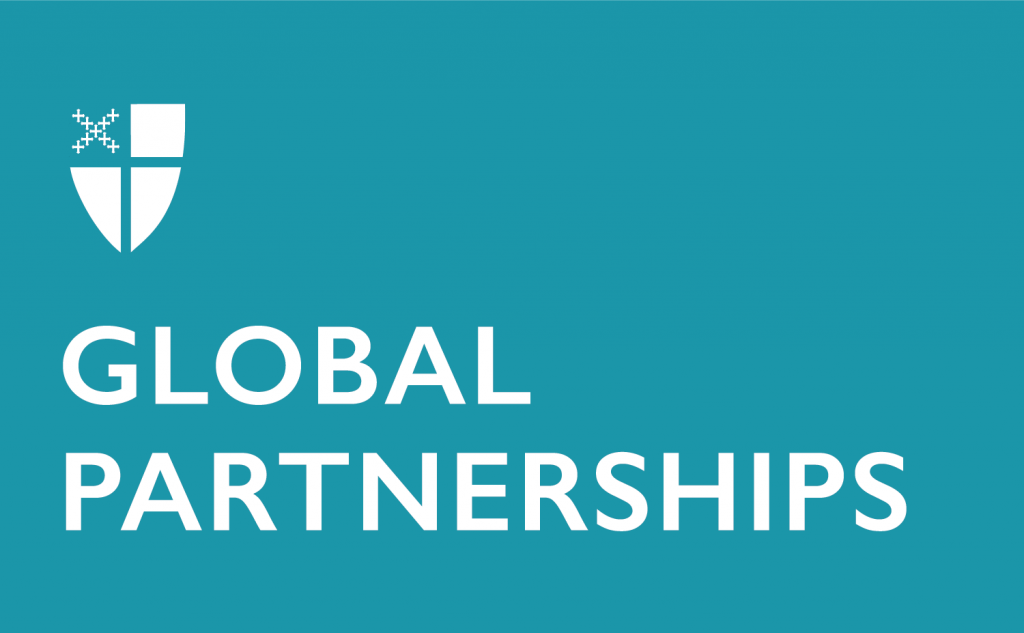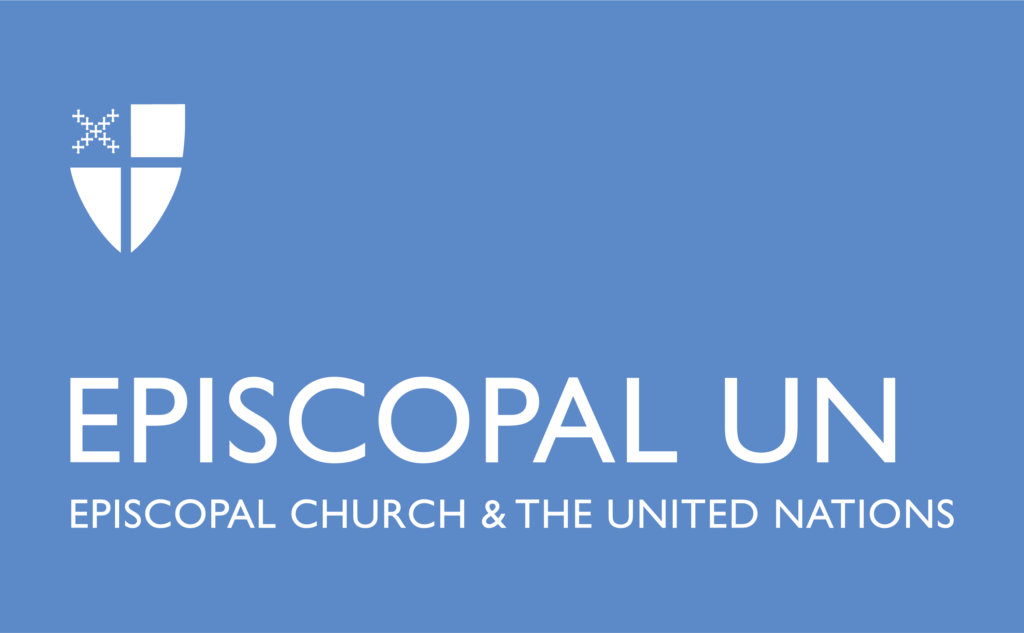Institutional Mechanisms for the Advancement of Women: Are National Machineries Broken?
By: Nancy Kaymar Stafford, Diocese of Rhode Island (Province I)
The Beijing Platform for Action highlights the importance of “national machineries” for the advancement of women. The United Nations defines those as bodies “recognized by the government as the institution dealing with the promotion of the status of women”.[1] National machineries can take many forms and it is incumbent on the individual state to determine the best way to develop an approach to the advancement of women’s rights.
However, the BPfA is instructive on what makes an effective national machinery, including: (i) the unit be in the highest level of government, falling under a Cabinet minister; (ii) taking account of the views of non-governmental and community organizations in planning, implementing and monitoring; (iii) sufficient resources from both a budget and capacity perspective and (iv) the ability to influence all government policies. The last point requires that an analysis of the effects a decision will have on women and men, respectively, must be undertaken. Often this simple act of analyzing the effects on women will show significant flaws in legislation or other policy initiatives.
Unfortunately, national machineries are often underfunded and have limited capacity. Issues of pay equity, discriminatory laws, violence against women and other harmful practices still plague many nations. When other crises arise – for example, economic or political crises – or a pandemic, women’s advancement takes a back seat. Moreover, documentation of advancements made, or issues where advancement is lacking, is often woefully missing. Government’s need to do more to ensure the women not only survive, but that they thrive.
In the United States, we have the Office of Global Women’s Issues which reports directly to the Secretary of State.[2] There is also a “Women’s Bureau” under the Department of Labor.[3] The former bureau’s mandate includes promoting the rights and empowerment of women and girls through US foreign policy. The latter bureau is tasked with safeguarding the interests of working women, advocating for equality and promoting a safe working environment. In addition to these, there are several other national machineries for the advancement of women: The Federal Women’s Program,[4] the Office of Women’s Health,[5] the Office on Violence Against Women,[6] etc. Given all of these programs, it appears the US government is taking the advancement of women’s rights seriously. But just like in so many countries, there is still much to be done.
In fact, women in the US appear to be losing ground on women’s rights despite these national mechanisms. The BPfA in paragraph 199, specifically notes the role of regional bodies as well as international machinery including the Commission on the Status of Women (CSW) and the Committee on the Elimination of Discrimination against Women. However, at the 63rd Session of the CSW, the US Delegation proposed that language be stricken from the CSW’s final outcome document reaffirming support for the BPfA. It suggested instead that the parties just “take note” of the groundbreaking agreement.[7] This is a tactic generally employed by the US when they want to shift their support for something. The effect is the undermining of support for the BPfA.
The US is one of only six countries who have failed to ratify the Convention on the Elimination of All Forms of Discrimination against Women (CEDAW) – the others being Iran, Somalia, Sudan, Palau and Tonga. Moreover, the US is the only country that has not ratified the Convention on the Rights of the Child, which promotes international standard to protect and advance the girl child. A cynic might think the US only ratifies agreements that benefit men!
The time is now for all governments to reaffirm their commitment to the Beijing Platform for Action and strengthen their national machineries to ensure that commitment is being fulfilled. The advancement of women must be paramount on the agenda of every government.
[1] E/CN.6/1988/3. The definition is based on the outcomes of the Seminar on “National Machinery for Monitoring and Improving the Status of Women”.
[2] Information regarding the Office can be found at https://www.state.gov/bureaus-offices/bureaus-and-offices-reporting-directly-to-the-secretary/office-of-global-womens-issues.
[3] Information about the bureau can be found at https://www.dol.gov/agencies/wb.
[4] https://www.commerce.gov/cr/programs-and-services/special-emphasis-programs/federal-womens-program.
[5] https://www.hrsa.gov/office-womens-health.
[6] https://www.justice.gov/ovw
[7] See, https://foreignpolicy.com/2019/03/14/at-united-nations-women-rights-gender-health-trump-diplomacy/.
______________________

About the author: Nancy is an attorney licensed to practice in New York State. She spent several years practicing as a corporate attorney before turning her focus to women’s rights as a supervising attorney for Georgetown University Law Center’s International Women’s Human Rights Clinic and for Emory Law School’s Feminism and Legal Theory Project. Ms. Stafford has worked extensively on women’s rights, particularly as they relate to the African continent, having published several articles and book chapters on the same. She is currently Vice Chair of the International Law Section of the American Bar Association (ABA) and Chair Elect of the International Law Section and Member of the Advisory Council of the ABA’s Center for Human Rights.
Mecanismos institucionales para el adelanto de la mujer: ¿Están rotos los mecanismos nacionales?
By: Nancy Kaymar Stafford, Diócesis de Rhode Island (Provincia I)
La Plataforma de Acción de Beijing destaca la importancia de los “mecanismos nacionales” para el adelanto de la mujer. Las Naciones Unidas los define como órganos “reconocidos por el gobierno como la institución que se ocupa de la promoción de la condición de la mujer” [1]. Los mecanismos nacionales pueden adoptar muchas formas y corresponde al estado individual determinar la mejor manera de desarrollar un enfoque para la promoción de los derechos de la mujer.
Sin embargo, la BPfA es instructiva sobre lo que hace que una maquinaria nacional sea eficaz, que incluye: (i) que la unidad esté en el nivel más alto de gobierno, dependiente de un ministro del gabinete; (ii) tener en cuenta las opiniones de las organizaciones no gubernamentales y comunitarias en la planificación, ejecución y seguimiento; (iii) recursos suficientes desde una perspectiva presupuestaria y de capacidad y (iv) la capacidad de influir en todas las políticas gubernamentales. El último punto requiere que se realice un análisis de los efectos que tendrá una decisión en mujeres y hombres, respectivamente. A menudo, este simple acto de analizar los efectos sobre las mujeres mostrará fallas significativas en la legislación u otras iniciativas políticas.
Desafortunadamente, los mecanismos nacionales a menudo carecen de fondos suficientes y tienen una capacidad limitada. Los problemas de equidad salarial, leyes discriminatorias, violencia contra la mujer y otras prácticas nocivas todavía afectan a muchas naciones. Cuando surgen otras crisis, por ejemplo, una crisis económica o política, o una pandemia, el adelanto de la mujer pasa a un segundo plano. Además, la documentación de los avances realizados, o de los problemas en los que falta un avance, a menudo lamentablemente falta. El gobierno debe hacer más para garantizar que las mujeres no solo sobrevivan, sino que prosperen.
En los Estados Unidos, tenemos la Oficina de Asuntos Globales de la Mujer, que reporta directamente al Secretario de Estado. [2] También existe una “Oficina de la Mujer” dependiente del Departamento de Trabajo [3]. El mandato de la antigua oficina incluye la promoción de los derechos y el empoderamiento de mujeres y niñas a través de la política exterior de Estados Unidos. Esta última oficina tiene la tarea de salvaguardar los intereses de las mujeres trabajadoras, defender la igualdad y promover un entorno laboral seguro. Además de estos, existen varios otros mecanismos nacionales para el adelanto de la mujer: el Programa Federal de la Mujer, [4] la Oficina de Salud de la Mujer, [5] la Oficina de Violencia contra la Mujer, [6] etc. Teniendo en cuenta todos estos programas, parece que el gobierno de los Estados Unidos se está tomando en serio el avance de los derechos de las mujeres. Pero al igual que en tantos países, todavía queda mucho por hacer.
De hecho, las mujeres en Estados Unidos parecen estar perdiendo terreno en los derechos de las mujeres a pesar de estos mecanismos nacionales. En el párrafo 199 de la BPfA se señala específicamente el papel de los organismos regionales y de la maquinaria internacional, incluida la Comisión de la Condición Jurídica y Social de la Mujer (CSW) y el Comité para la Eliminación de la Discriminación contra la Mujer. Sin embargo, en la 63ª Sesión de la CSW, la Delegación de EE. UU. Propuso que se elimine el texto del documento final de la CSW reafirmando el apoyo a la BPfA. En cambio, sugirió que las partes simplemente “tomen nota” del acuerdo innovador. [7] Esta es una táctica generalmente empleada por Estados Unidos cuando quieren cambiar su apoyo a algo. El efecto es el debilitamiento del apoyo a la BPfA.
Estados Unidos es uno de los seis países que no ha ratificado la Convención sobre la Eliminación de Todas las Formas de Discriminación contra la Mujer (CEDAW); los otros son Irán, Somalia, Sudán, Palau y Tonga. Además, Estados Unidos es el único país que no ha ratificado la Convención sobre los Derechos del Niño, que promueve estándares internacionales para proteger y promover a las niñas. ¡Un cínico podría pensar que Estados Unidos solo ratifica acuerdos que benefician a los hombres!
Ha llegado el momento de que todos los gobiernos reafirmen su compromiso con la Plataforma de Acción de Beijing y fortalezcan sus mecanismos nacionales para garantizar que ese compromiso se esté cumpliendo. El adelanto de la mujer debe ocupar un lugar primordial en la agenda de todo gobierno.
[1] E / CN.6 / 1988/3. La definición se basa en los resultados del Seminario sobre “Mecanismos nacionales de seguimiento y mejora de la condición de la mujer”.
[2] Puede encontrar información sobre la Oficina en https://www.state.gov/bureaus-offices/bureaus-and-offices-reporting-directly-to-the-secretary/office-of-global-womens-issues .
[3] Puede encontrar información sobre la oficina en https://www.dol.gov/agencies/wb.
[4] https://www.commerce.gov/cr/programs-and-services/special-emphasis-programs/federal-womens-program.
[5] https://www.hrsa.gov/office-womens-health.
[6] https://www.justice.gov/ovw
[7] Véase https://foreignpolicy.com/2019/03/14/at-united-nations-women-rights-gender-health-trump-diplomacy/.
________________

Acerca del autor: Nancy es una abogada con licencia para ejercer en el estado de Nueva York. Pasó varios años ejerciendo como abogada corporativa antes de centrarse en los derechos de la mujer como abogada supervisora de la Clínica Internacional de Derechos Humanos de la Mujer del Centro de Derecho de la Universidad de Georgetown y del Proyecto de Teoría Jurídica y Feminismo de la Facultad de Derecho de Emory. La Sra. Stafford ha trabajado extensamente sobre los derechos de la mujer, particularmente en lo que se refiere al continente africano, y ha publicado varios artículos y capítulos de libros sobre los mismos. Actualmente es Vicepresidenta de la Sección de Derecho Internacional de la American Bar Association (ABA) y Presidente electo de la Sección de Derecho Internacional y Miembro del Consejo Asesor del Centro de Derechos Humanos de la ABA.


